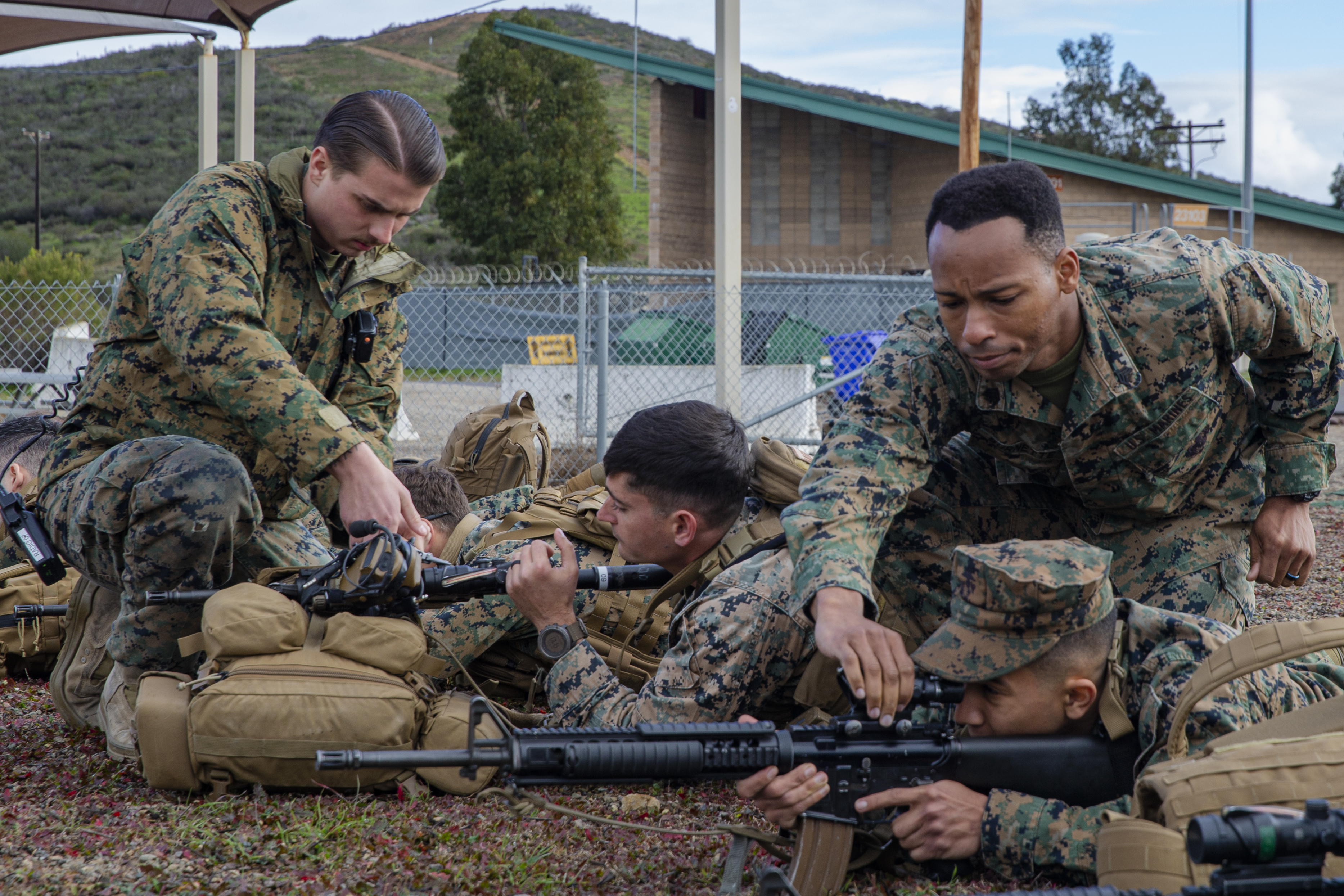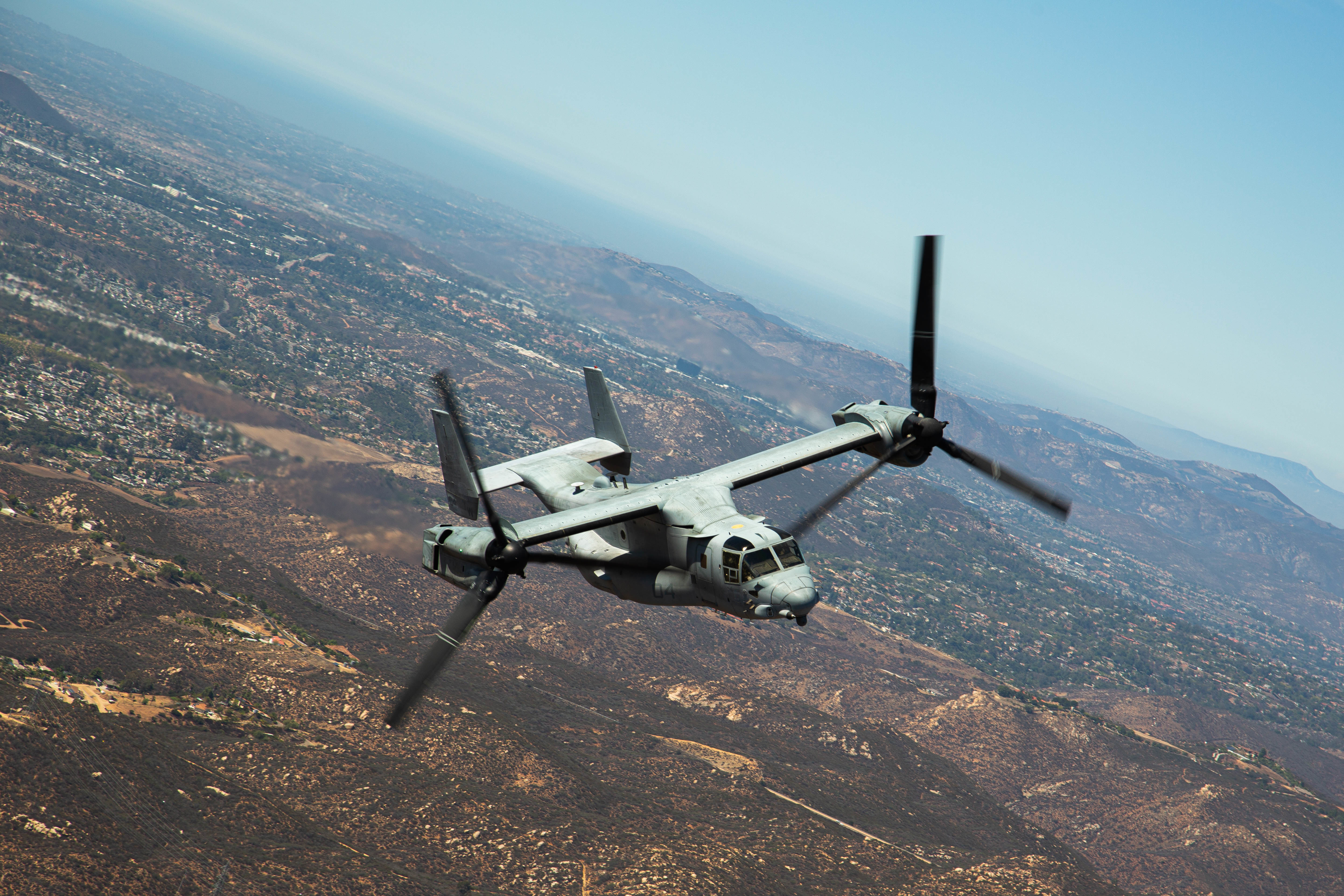
SAN DIEGO – A military installation’s sewer lines and electrical grids are critical to a unit’s combat readiness, meaning bases and stations must prepare to grapple with outages, breaks, attacks and other threats to critical infrastructure, a Marine Corps installation commander said last week.
“The sustainment of facilities – things that maybe don’t really thicken the blood of the warfighter. But there’s something very important about thinking about installations as part of a larger system,” said Col. Thomas Bedell, who commands Miramar Marine Corps Air Station in San Diego.
“Historically, we’ve kind of underfunded investments in installations,” he said Wednesday at the WEST 2023 conference, co-hosted by the U.S. Naval Institute and the Armed Forces Communications and Electronics Association. While he didn’t provide details, Bedell hinted that might begin to change in upcoming defense budget requests to get after facility sustainment.
Installations aren’t just a physical place but should be appreciated – and appropriately funded, sustained and maintained – as “a system of systems,” much like the importance the Marine Corps and Navy place on combat assets such as the Marine Air-Ground Task Forces and aircraft carriers, Bedell said. He echoed comments made earlier this week by Marine Corps Assistant Commandant Gen. Eric Smith that logistics are the “fifth element” of the MAGTF, and thus equally critical to combat readiness and success.
It hasn’t always been viewed that way. For many years, installations have been underfunded, and deferred maintenance often continues to lag even as infrastructure facilities age and face more, and costlier, wear and tear. Moreover, Bedell noted, those backlogs in repairs and upgrades to critical infrastructure – like water lines, sewer mains and communications lines –risk the readiness of operational forces housed and supported at those installations.
Bedell recalled how, as a captain and AV-8B Harrier pilot deployed on the former amphibious ship USS Belleau Wood (LHA-3) on its final cruise in 2004, he met a hull technician whose job was to lead a “tiger team” that would respond to a busted sewage line. Among the things he learned from that interaction was that “as things get old, they break. Things as inglorious as sewer lines, and electrical cables, and water mains. Things that don’t really seem to be necessarily as important when you’re talking about warfighting capability.”
Land-based installations are like a ship at sea, he said, noting an aircraft carrier is “a floating city,” with 5,000 people, a flight deck, weapons, food, and berthing. “You have an installation that is able to support the mission of a carrier strike group.”
An installation, in reality, is “an operating platform,” Bedell said, and should be seen much like an aircraft carrier. Miramar MCAS – with 789 buildings, the headquarters of the 3rd Marine Aircraft Wing and home to more than 15,000 Marines and sailors – “is a two-mile long aircraft carrier … that supports all of the aircraft and all of the people with all of the things that an aircraft carrier requires.”
“Now we can start thinking and talking about all the requirements that the ‘operating platform’ needs to be able to fulfill its portion of the mission for the warfighting capability of the embarked Marines and sailors and their platforms and their equipment,” he said.
An installation’s resilience isn’t dissimilar from that of an aircraft carrier, said Bedell, which requires propulsion, food, fuel and water in order to operate the aircraft. “You’d better have a Plan B and a couple of layers of resilience.”
“We’re having a similar conversation now about stations” and ensuring energy resiliency, he said. “How do we keep power to all of the critical systems on this operating platform?”

The Miramar MCAS is fed by two lines from the local gas and electric power company. “That’s better than one,” Bedell said. “If I lose power from the public utility, what is my option?”
The air station has a micro-grid that provides the backup, so if it’s cut off, it can generate electricity from solar arrays, generators and methane from the adjacent landfill. Just last year, during an extended heat wave, Miramar officials, working with the local utility to reduce its load on the larger grid, disconnected the air station from the public grid for about five hours and relied on the micro-grid to maintain its energy requirements. That included support to airfield operations.
But Bedell questioned what would happen if the sewer lines or the water main break and there’s no water storage available on the installation. “What is my plan for water? What is my plan for food? How do I respond to the various threats that the installation faces, in the same way that a ship would be considering the various threats to it?” Bedell said.
Technology is offering new tools and capabilities that can help build resiliency into an installation’s basic functions. Bedell noted the benefits from an investment to secure the 17,000-acre air station. The bulk of the land is an expansive area of hills east of the airfield, but borders suburban communities that are dotted with hiking and biking trails. “It’s a very large area and very hard to patrol,” he said.
A counter-intrusion detection system, including three towers, cameras, infrared, integrated scanning using artificial intelligence, “intercepted 54 trespassers that we would have never known were there,” he said. “I’m concerned about the trespassers’ safety,” as the East Miramar area includes a rifle range.
“That was a plug-and-play technological solution,” he noted.
Another investment, he added, is a tech solution for counter-unmanned aerial systems and providing the ability to detect drones, which threaten both station security and air operations.
The colonel made a pitch to industry representatives attending WEST to help the Marine Corps find ways to build resiliency into its facilities and installation infrastructure. “Technology, platforms, innovative solutions … are absolutely ripe for opportunity in the installations world,” he said. These might include shifting facility readiness data and detailed energy use to the cloud, for example.
Bedell said it’s also important for the service to invest in installation facilities that support people, like berthing and barracks. He argued the Marine Corps needs to give equal consideration to that kind of support as it would for a weapons system. “At Miramar, I am going after the barracks,” he said.
At a recent town hall with Marines living in the barracks, he heard from one Marine returning to station who had to deal with a key card that wouldn’t open his door, an exploding toilet and a dryer fire. “That is not optimizing the asymmetric advantage of the Marine,” he said. “I think there’s a bunch of second- and third-order effects of that.”
“We are asking them to work incredibly hard, go through training, get ready for deployment. That part of the system needs to be right,” Bedell said, adding “you can’t have exploding heads and expect that Marine or sailor to be excited about going to work and working as hard as we need them to work.”





